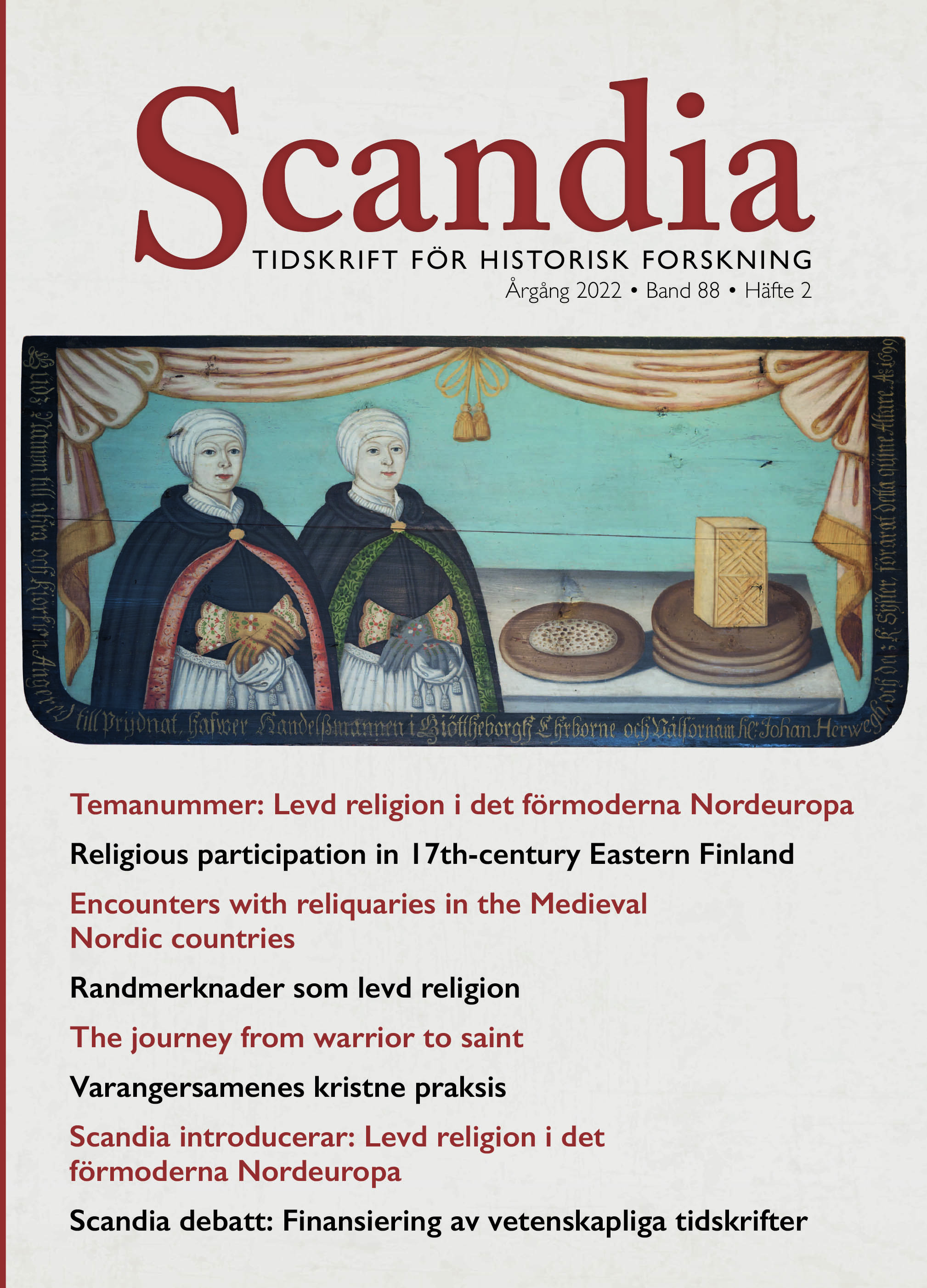Shining, touching, nodding, singing. Sensory encounters with reliquaries in the medieval Nordic countries.
DOI:
https://doi.org/10.47868/scandia.v88i2.24800Keywords:
reliquaries, relics, Middle Ages, senses, devotionAbstract
In a medieval church, saints were present in their relics and could be encountered, but typically not directly seen or touched. The sensory encounters occurred via specific interfaces or, in David Morgan’s words, focal objects – reliquaries made with the best available skills and materials to represent the holy presence. These encounters, taking place, for instance, in the contexts of miracles or feasts of relic translations, were highlights of lived religion for laymen and religious professionals alike despite the differences between the groups’ daily lives and access to religious objects.
Reliquaries were made with remarkable investments in visual impact. However, in the medieval Nordic written sources, this impact is seldom described. Instead, other sensory and interactive effects manifesting the power of the saints and their relics – scents, sounds, touch, and movement – seem to dominate the emotionally charged encounters with reliquaries. This article argues that the eloquent shapes, shining materials, and hagiographic imagery were not ignored, but their message was incorporated into the other sensory stimuli in the written descriptions of encounters with the holy objects.





